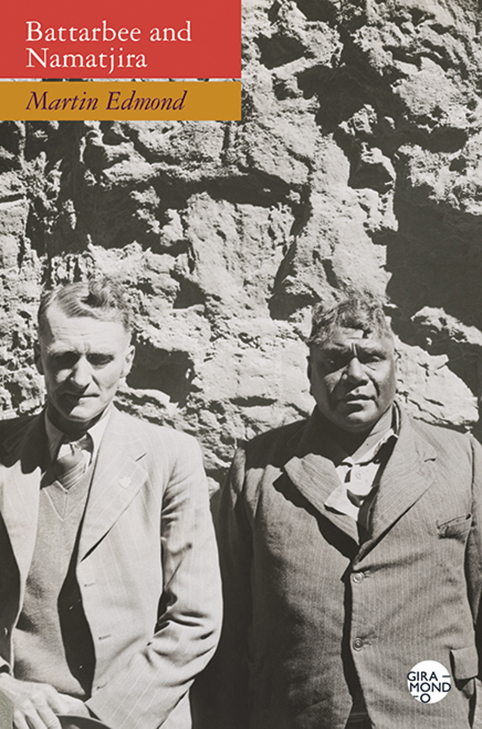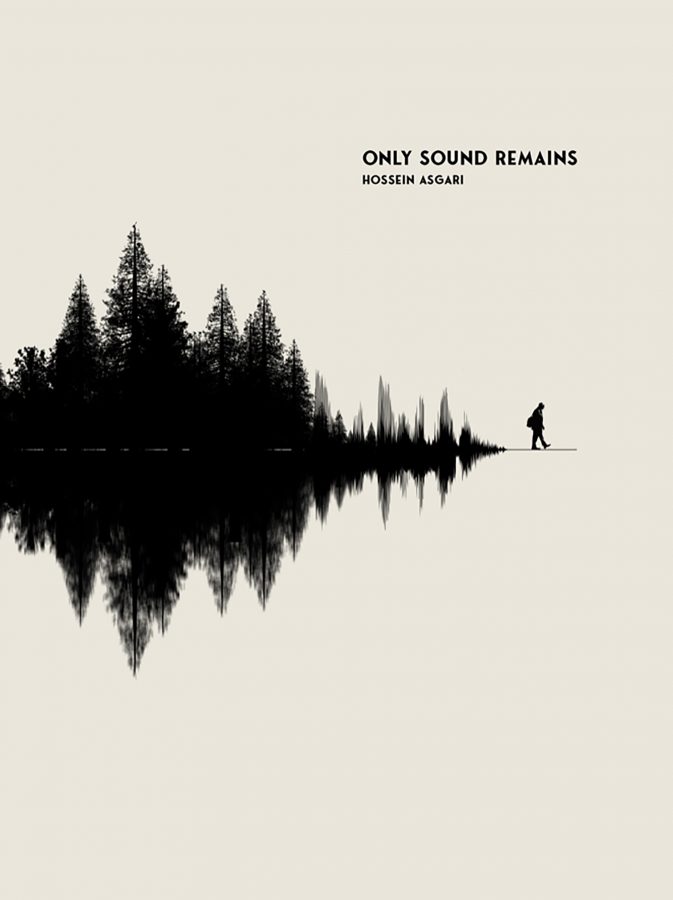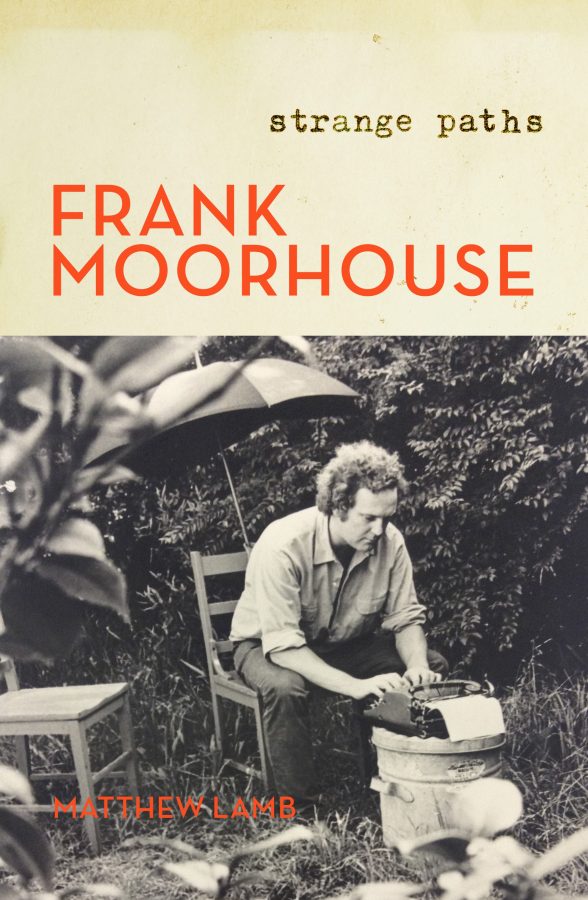Some books are more curious than their authors. They hint at secrets or deeper plots that the writer either sidesteps or seems not to notice. Martin Edmond’s Battarbee and Namatjira tracks the lives of its subjects in considerable, circumstantial detail, but what might be called the map of their shared spatial histories is largely left undrawn. What shared creative region did the artists Rex Battarbee and Albert Namatjira fantasise or, less rhapsodically, set about depicting in their comparably stoical fashions? Like his subjects, Edmond favours letting the facts compose their own fields of sense, only occasionally (as late at night around a campfire) voicing a thought or delivering himself of an aperçu. These asides, where Edmond almost seems to be talking to himself, are broken off, the thought left hanging in the air, like a path untaken, and the chronological journey resumes. Instead of adding an additional surface to the painting, consolidating the direction of the narrative, such apostrophes act like the anthropomorphic details Namatjira is said to have favoured: they put a personal mark on an otherwise conventional story (two men discovering mateship in the bush). They introduce its singularity, which in the hands of a different, more curious writer might have been where the story began.
Battarbee and Namatjira first crossed paths during Battarbee’s second outback painting trip in 1932. Or did they? An unidentified ‘camel man’ visited the ‘itinerant watercolour painter from Bakers Road, Blackburn, Victoria’, at his Temple Bar Creek campsite. Was it the same man who had visited Battarbee on the Finke? Edmond wishes it were, proposing ‘those meetings can stand as a beginning of the story of their collaboration.’ And he adds:
like many events that, in retrospect, are highly significant, they must at the time have seemed commonplace: a casual encounter like hundreds of others that happen every day among people on the road.
Two years later, back at Hermannsburg, a still anonymous Arrernte man shows Battarbee landscape sketches done in coloured crayon. In May 1935, with materials Battarbee had advised Pastor Albrecht to buy, Albert Namatjira is supposed to have produced his ‘first watercolour painting’.
The famous painting trip to Palm Valley and other places, when Namatjira ‘learnt to see colour in a way that was sound and true’, occurred the following year. It was repeated in 1938. It was a slow burn relationship: Namatjira continued to feed the modest tourist market with landscapes on woomeras and boomerangs, but by the early 1940s had also produced about fifty paintings. Battarbee’s role changed: Namatjira held his first one-man show in Melbourne in December 1938. Increasingly, Battarbee became Namatjira’s manager, a role he played informally over the next fifteen years of growing fame and affluence until, around 1952, the artist began to transfer his business interests to the dubious care of John Brackenreg.
We learn surprisingly little about what motivated either artist. Both in different ways masked their feelings. Whatever Edmond’s valuable research has been able to unearth about their professional opinions is generously conveyed. Battarbee had, it appears, a healthy opinion of his own competence, a view not entirely shared by his reviewers. Namatjira’s judgements, passed on his own work as well as that of other artists, are honest and as reliable as one would expect. But what of the conversations the two men might have had? There is Battarbee’s advocacy, and his careful distancing of himself from any kind of aesthetic paternalism; there are a few touching handwritten notes from Namatjira, recalling the old days. But Namatjira’s interests passed into the hands of John Brackenreg. Battarbee married and settled down in Alice Springs. Commercialisation of the Namatjira school diffused, diluted and ultimately undid the memories from the glory days in Palm Valley. Between them there seems to have been mainly the contract of mimicry: the wordless discretion of those painting performances, where each artist learned his own luminousness through working alongside the other, independently.
Although ably framed with noisy historical action, Edmond’s history is remarkably silent when it comes to the artists’ intentions. This seems appropriate to the characters it describes. Namatjira and Battarbee come across as men who prefer their own company. Moments of self-revelation or assertions of rights are exceptional, unsought interruptions to lives whose inner landscape is portrayed in the paintings, where the elements (ghost gum, corrugated ridge, triglyphed plain) communicate without lips, as John Shaw Neilson would say, ‘and still without speech they implore us’.
The refusal of Legend Press to grant reproduction rights to Namatjira’s paintings led author and publisher to make a creative decision: Battarbee and Namatjira includes no work by either artist. Edmond’s descriptions of individual works are rather good, and readers can visit a website where some of the images may be viewed. But the invisibility of the watercolours under discussion, and particularly the diffusion of any temptation to compare the studio-trained work of Battarbee with the work of his sometime imitator Namatjira, has the (in my view desirable) consequence of deepening the silence of the work. The paintings are known through their commentaries, which, like the occasional authorial commentaries, surface intermittently in the narrative – though the works are hard to date, stylistic criteria are inconclusive, and the whereabouts of many paintings that have gone through the auction rooms are unknown.
There are curiosities of treatment and subject matter in Battarbee and Namatjira, but also intriguing facts that call for further commentary. Edmond’s discretion on this matter is no doubt editorial, involving judgments about what is relevant to his topic. But what is his topic? Despite the David and Jonathan thesis implied in the book’s title, the motivation of Edmond’s study is obscure. The clarity and the psychological plausibility of the narrative depend on its massive, if traditional, mythical scaffolding. But the point of the story remains enigmatic, the expression as laconic as the speech of the men whose relationship is ostensibly under investigation.
The opening chapters of Battarbee and Namatjira establish parallel histories that render a future meeting full of interest. Two cultures, the Arrernte and the Lutheran, are described; two histories of growing into manhood are given. Edmond describes Battarbee’s presence at the second Battle of Bullecourt and his wounding there, and Namatjira’s circumcision as part of the rites initiating him into manhood. These experiences, rationalised as strange mirrors to each other, are the mythical scaffolding of the book. Their function is to suggest that the two men were prepared by historical and personal circumstance to find something in common.
Rhetorically, it works very well, much as it might in a film. As an explanatory mechanism, though, it disguises the fact that Edmond lacks a theory of meeting. He is very interested in meetings, in chance encounters on the road that propel those who meet onto different paths. In fact, the psychic topography of the history he describes might be described as Lucretian. A man sets out on a painting trip – by foot, or horse and buggy, or by train – and by chance falls in with another man, who is also setting out on a journey with a distinctive spiritual, artistic or cultural goal in mind. They get talking; they are naturally encouraged by each other’s idealism; they share plans and dreams. A subtle reconfiguration of aims, an enlargement of confidence occurs. Then they split up, continuing on their different paths.
A multiplicity of such strange meetings, scrupulously dated and located in Edmond’s book, show that travelling to the Centre in the 1930s involved an experience of crowded solitude. Shadowing these field trips were editors, publishers, university departments, and sometimes ASIO. The total map of this field of ramifying connections would illustrate the Lucretian clinamen, that principle of endless subtle deviation from the original direction.
John Shaw Neilson’s editor, R. H. Croll, meets Battarbee along the Wallaby. Near the Centre, many years later, W. E. H. Stanner, fresh out of college, also crosses Battarbee’s tracks. There are Jindyworobak appearances. And later – much later – Geoffey Bardon, who is trying to sort out a way to protect the intellectual and commercial property interests of the Papunya Tula painters, seeks out Battarbee at his East Todd gallery. I have followed the paths of some of these figures; but Edmond’s book is the first to have identified the thread through their labyrinth. To imagine the conversations these crossings elicited is to suggest a new genealogy of Australian cultural coming-into-being.
Yet Edmond is incurious on this front. Chance meetings are essential to the development of artistic self-consciousness, but the discourse that turns them from brief encounters into the ramifying threads of a new bicultural self-awareness is left unremarked. Perhaps Edmond’s blindspot in regard to the relationship between poetics and politics explains his rather peremptory treatment of T. G. H. Strehlow, who wrote uniquely about both Namatjira and Battarbee. I have a parti pris on this point: it was disappointing that my extended discussion of the relationship between Strehlow and Namatjira in The Lie of the Land (1996) escaped Edmond’s attention.
However, there is no reason to be defensive. A laconic refusal to draw out the implications of the meetings Edmond documents is consistent with a lack of curiosity about the nature of intellectual exchange and, taking it beyond individual idiosyncracy, the effort to construct a culture. This criticism might be deduced from Edmond’s seeming lack of interest in the content of The Heritage of Namatjira (1992), edited by Jane Hardy, J. S. Megaw and M. Ruth Megaw. Edmond praises the scholarship collected in this book, but except for drawing from it confirmation of his thesis that Namatjira’s landscapes have an anthropomorphic dimension, he derives little intellectual stimulation.
Yet the discussion of mimicry in that collection suggests how the intellectual exchange between Battarbee and Namatjira might have occurred. The mutual stimulus of the encounter between these men seems to have been a transposition to the aesthetic sphere of what René Girard, theorising erotic identification, calls ‘mimetic desire’. Neither artist desired to copy the other; both desired to paint what they imagined the other desired to paint. The paring away of anecdotal detail, the penetration to spirit of place, the conscious refusal to depict contemporary life (or infrastructure): these are romantic devices consistent with an anti-modernist or symbolist temper – one that cathects unruly desire and beds it down in the eternal landscapes of the remote interior.
*
Edmond draws attention to the controversy around Namatjira painting from memory. He quotes a certain ‘McCoy from Native Affairs’, who opposed the artist’s plan to build a house in Alice Springs because it might lead to a falling off in the quality of the art. Namatjira might be tempted to adopt ‘the technique of … painting from memory and selling whatever he could obtain for his pictures’. In a rare moment of exasperation, Edmond comments:
Why a civil servant should think it appropriate to advise an artist on his method of composition is unclear.
Edmond documents in some detail the stupid and psychologically brutal racism of the Department of Native Affairs, the grasping self-interest of the local art dealers, and the larger hypocrisy of imperial patronage. He demonstrates that if Namatjira was a wanderer between two worlds – to borrow Joyce Batty’s phrase – it was through no fault of his own. Ambitious to enjoy the advantages of both worlds, he was sullenly, obstinately and resentfully blocked at every stage. As a work set against the background of a collective consciousness that continues to exercise selective amnesia – pretty much every structural, institutional and racist obstacle Namatjira faced confronted the artists of the Papunya Tula school a decade or so later – Edmond’s social history of an art movement makes for somber reading.
The fact that the painting-from-memory controversy preoccupied white critics illustrates the racist substratum of the discourse around Namatjira’s gifts. Plein air painting and the primitive were twinned in the value system that prepared his work for the market. It is a familiar paradox: the reductive logic of this model of authenticity treats the artist as a blank canvas, a photographic plate that is completely exposed to the scene and reproduces it ‘from life’.
Edmond makes the obvious point that memory, imagination, vision and perception are interleaved. Placing to one side speculations about Namatjira’s totemic loyalties and the archetypal eroticism that Edmond detects in his anthropomorphised knots and clefts, erect stumps and pale limbed trees, any artist will move back and forth between seeing and drawing. The eye that follows the hand follows the line of memory. Mechanics aside, however, there is an odd and presumably intentional amnesia at the heart of Namatjira’s ‘luminousness’ – an effect that may have had its origin in a technical borrowing from Battarbee. Much is left out: the enigma of the paintings’ emptiness contributes to the impression that most of what the artist knows, and which defines the sense of place, is invisible. Others have suggested that Namatjira was remembering the landscapes of the illustrated Bible – a double mimicry that goes some way to explaining the disquiet these paintings communicate, and some way to elucidating why the self-appointed judges of his work felt vaguely that what they were seeing was not the real thing. But Edmond is incurious about this, as he is about the differences between the paintings of Albert Namatjira and those of his children. Discussion of Namatjira’s Christian faith and his Indigenous attachments is superficial.
Whether the reluctance to deepen the enquiry is artless or artful, it is offset by Edmond’s appetite for chronological detail. The evidence he assembles of a crowded solitude provides the basis for perceiving a direct relationship between the emergence of a nationalist interest in creating a distinctive Australian literature and art and the field trips from the periphery to the Centre and back, which occurred across the two decades between 1935 and 1955. Through Battarbee, the lineage of this search for an authentically Australian voice stretches back to the Mallee evocations in the poetry of John Shaw Neilson, whose chromatic figures of speech might so often be applied without strain to Namatjira’s watercolours. It looks ahead to Bardon’s interpretation of the national significance of the Papunya Tula painting movement. To tighten the skein of shared poetic interests, it would be necessary to reverse Edmond’s tactic of cutting off Strehlow, and reweave his anthropological theophany into the conversation. If this were done, we would discover some surprisingly contemporary resonances. Les Murray is perhaps the most distinguished writer to have taken up the challenge of an Australian literature in terms Strehlow would have recognised.
Running through these lines of intellectual descent is the ghost of the journey to the Centre. The encounter with Indigenous cultures and landscapes has the character of a test. It acquires, in retrospect, the symbolic meaning also attributed to the ANZAC landings at Gallipoli. Initiation is offered – a psychic enlargement produced by exposure to an un-European symbolic economy, an essential exchange between physical places and their reproduction and renewal in performance. This initiation is reflexive: by its light, European traditions of representation are scrutinised. Wherever these (invariably male) initiates return to, they find their new ‘home’ possesses a new interiority, a grammar of equivalences that makes sense of the Australian setting. The artist of this trial remains Russell Drysdale, whose outback portraits (the natural inhabitants of the vernacular republic) always remind me of photographs of Namatjira in his later years.
Battarbee and Namatjira remain, in their separate ways, like their beloved ghost gums, isolated in their landscapes. Their appeal is partly due to their political quietism. Their expressiveness is, in a way, like the treatment of the trees, deliberately enigmatic. They can be prized for what they hold back. In this sense, their studiously unpeopled visions discourage elaborate interpretation; intellectual curiosity about the relationship of style, subject matter and life experience is easily ridiculed as gratuitous. In Edmond’s rich but laconic narrative, there are no lessons to be learned. Beyond bearing witness to the triumph of the human spirit, no inferences are to be drawn about the nexus between, say, the bush ballad (or ‘Our Country’) conception of Australian culture and an endemic racism masquerading as a Romantic embrace of the rural primitive. It would be in bad taste to question the nationalist myth: can the critic presented with Namatjira’s unhappy history offer anything better? And besides, who asked for an opinion? These thoughts occurred to me as I finished Edmond’s book: a certain kind of historical clarity easily divests the past of alternative horizons.






